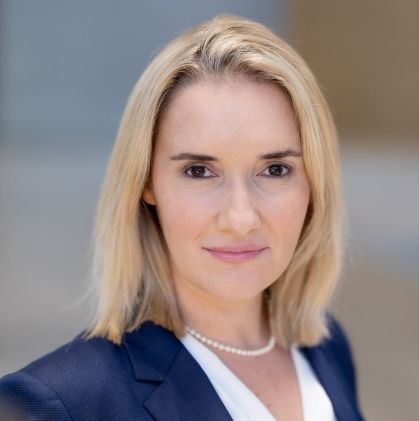My passion has always been technology and data. For most of my career I have been focused on the front office – and I’ve seen how real-time data and technology solutions have transformed the industry, including digitalisation, electronification of trading and automation of workflows. They have made huge differences for the growth of these companies. Front offices and investment banks in particular now are quite advanced in terms of these technologies.
In the past two to three years what I’ve also seen is the buy-side looking to move in that direction. This is being driven in particular by client demand, as clients are changing the way they operate and the expectations they now have of their providers. There has been increasing interest in using Cloud, implementing digital offerings and automating. It’s become an exciting time for this industry as well.
Asset management is a good illustration of this. With pressure on margins in a competitive market, we’ve found more asset managers are looking at first how to differentiate themselves for their clients, secondly how they can diversify their offerings, and then opening technology branches to help them do this, focusing on analytics as an example. Bravura is well placed to help firms with this technology and to diversify their offering. Our microservices are excellent in helping deliver this kind of solution.
This movement in the market is one of the reasons I joined Bravura. Not only is it market leading in what it does, it’s very entrepreneurial and agile. As a business, we can act fast where we see a trend or an opportunity. I find that very exciting in terms of what we can deliver for the industry.
Bravura’s potential is huge, not least because it spans both the retail and institutional markets – it is well known for its wealth technology, and also its fund administration technology, for example transfer agency. Over £3 trillion is entrusted to Bravura’s systems, with the likes of JP Morgan and Bank of New York Mellon using our solutions. To some extent I think we may have been a little too humble about our achievements in the market to date.

Wind of change
In my experience our clients generally have three overarching aims – first is to attract new customers, second to reduce their TCOs (total cost of ownership) and third to increase their margins. To achieve those aims I believe they have to differentiate themselves versus their competition, diversify and they have to operate with greater efficiency – making best use of their assets. These business aims are far from new, but they are fundamental and technology is the route to achieve them.
In terms of differentiating themselves and attracting customers, we have only to look at the way individuals and businesses have responded to the pandemic to see the leaps and bounds in usage of digital. There is no turning back the clock on that at any level.
But now clients (individuals and businesses) want a different offering, a different way of interacting with their providers, whether it is their financial adviser, asset management provider, platform or fund administrator. This is where digitalisation is going to be key. The buy-side industry has been heavily reliant on legacy technologies which do not integrate, and manual operations exist in far too many places as a result. This slows down operational processes and does not reflect well on the industry, in particular from a customer perspective.
Client expectations are now for a fast, integrated experience, where they are more in control of when and how they operate. Digitalisation where the client wants to interact in a new way, to speed up the process, and automation, using intelligent workflow to help reduce errors and increase efficiencies – which is where AI and machine learning are deployed – is going to be transformational. There is a race now to offer this kind of experience to clients because with it comes distinct competitive advantages.
Our machine-learning system, Stanza, for example, offers companies the ability to quickly read and understand the intent of customer communications and deal with or allocate them automatically, creating a faster and more efficient customer response. And, as it is constantly learning from its interactions and delivering insights, it is always improving on the service. That is a powerful combination.
Digitalisation, automation and cloud services are now essential to deliver fast data processing and analytics. We’ve seen this introduced into risk actions and now other areas of the market are beginning to see the advantages.
Market trends analysis
Key across the spectrum of the market from financial advisers through asset managers to fund administration companies, will be having the right analytics in place to help best serve and deliver to clients. For instance, financial advisers can identify the different behaviours of clients – risk profiling and assessment, investment behaviours in relation to demographics, and so forth. Likewise, asset managers can better identify trends and demand for new assets, in ESG and ETF investments to name but two.
For ESG in particular, we believe data analytics are going to be key, to align ESG definitions and strategies, which can vary widely with clients’ beliefs and ambitions, and delivering solutions in a consistent manner.
A trend we have been responding to is that whereas in the past there was clear segregation between businesses, increasingly there is a blurring of those lines of demarcation. What we are seeing, for example, is more fund management clients moving into the wealth management market, and institutional clients moving into direct to consumer – engendering diversification and giving greater ownership and control of the eco-system in which those businesses are operating. Digitalisation and automation are the means to access and to achieve success in these new operational spheres.
Assessing the market, in terms of digitalisation the early adopters have already carved out the path. Now, we are at the stage in the technology adoption lifecycle where the bulk of the companies in the market will begin to catch up. They can’t afford not to. They will look at the available tools and how they are being used and decide where and how they can differentiate their service. That is where we will see the differences being carved out.
With automation on the other hand, I believe the market is still in the early adopter stage because it requires standardisation, which currently in the market is low. Which means there can be early mover advantages still to be had.
Implementing change
If a company wants to take greater control of their technology eco-system, Bravura can enable that through our microservices – using a modular approach.
Controlling the internal eco-system can lead to a reduction in TCOs. Automation which takes manual processing or IT resource out of the workflow, enables those resources to be deployed elsewhere, such as on the revenue generation sides of the business.
Stanza, for example, helps store all digital data in one place, simplifying reporting and auditing processes.
We understand that engaging with advancing technology can be daunting or may seem challenging from an operational perspective. But what companies need to think about is what they are trying to achieve as a business now and into the future; is that to reduce TCOs, to be more efficient, to attract more clients, to better compete with their competitors, to deliver a greater range of choices to clients? Then it’s a matter of mapping current processes and practices and what the business would like to achieve, and how, through using a modular microservices approach, those goals can be attained. With microservices based on APIs, the ability to integrate is made much easier. When we take companies through this mapping process, we often see the light bulb moment where they get both the potential for their business and that implementation is far from as difficult as they may have imagined. There is no reason companies should not be implementing this technology now.
Besides the great tech, there are other reasons I’m excited to be at Bravura. The mentoring programme for female talent and the philanthropic initiatives we’re putting in place to name a few – but I will talk about those in more detail at a later date.
More Insights

